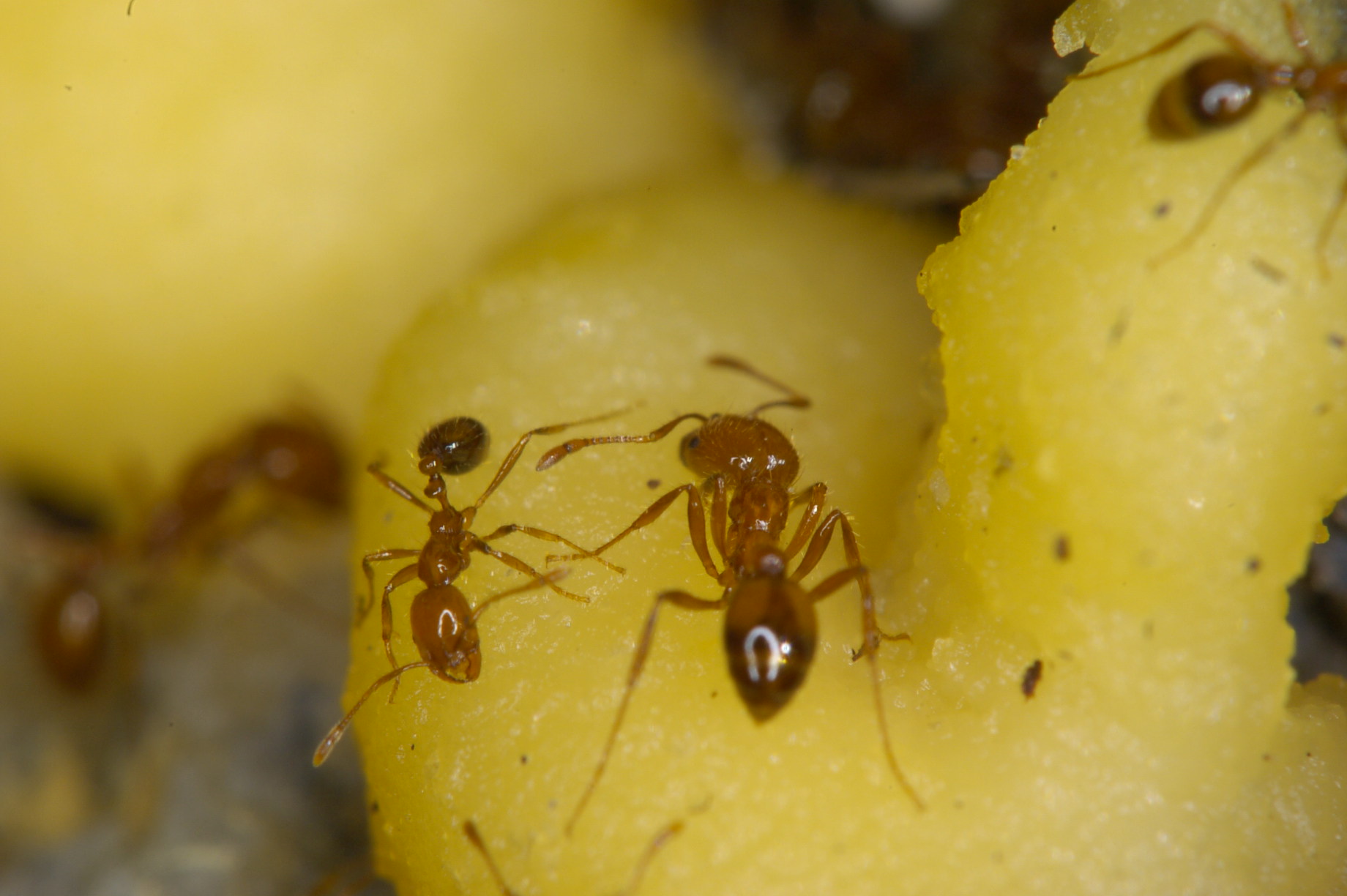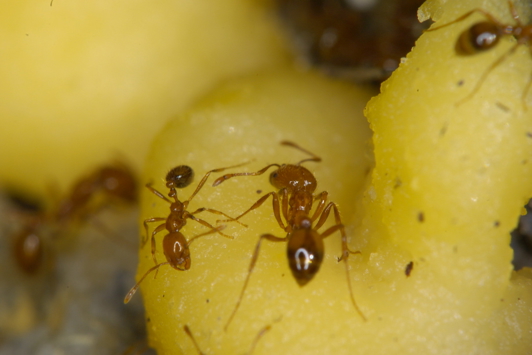
Tropical fire ants on food
Tropical fire ant
Tropical fire ants can form super-colonies, displacing native ants, insects and animals and feed on any plant or animal matter from seeds to small mammals and birds.
They are highly aggressive ants with a painful sting and disturbing a nest can quickly result in dozens of stings.
What to look for
- Shiny brown-orange body with a range of sizes (2 to 8 mm).
- Some ‘major’ (larger) ants have an oversized square head.
- Forming large colonies, often presenting as sandy mounds.
Where to look
- Nests in sand, lawns, parklands and disturbed areas, mostly in sunny places.
- In plant materials or soil from gardens, nurseries or agricultural land.
-
High risk ants for Cocos (Keeling) and Christmas Islandspdf (653 KB)
-
High risk ants for Western Australiapdf (598 KB)

